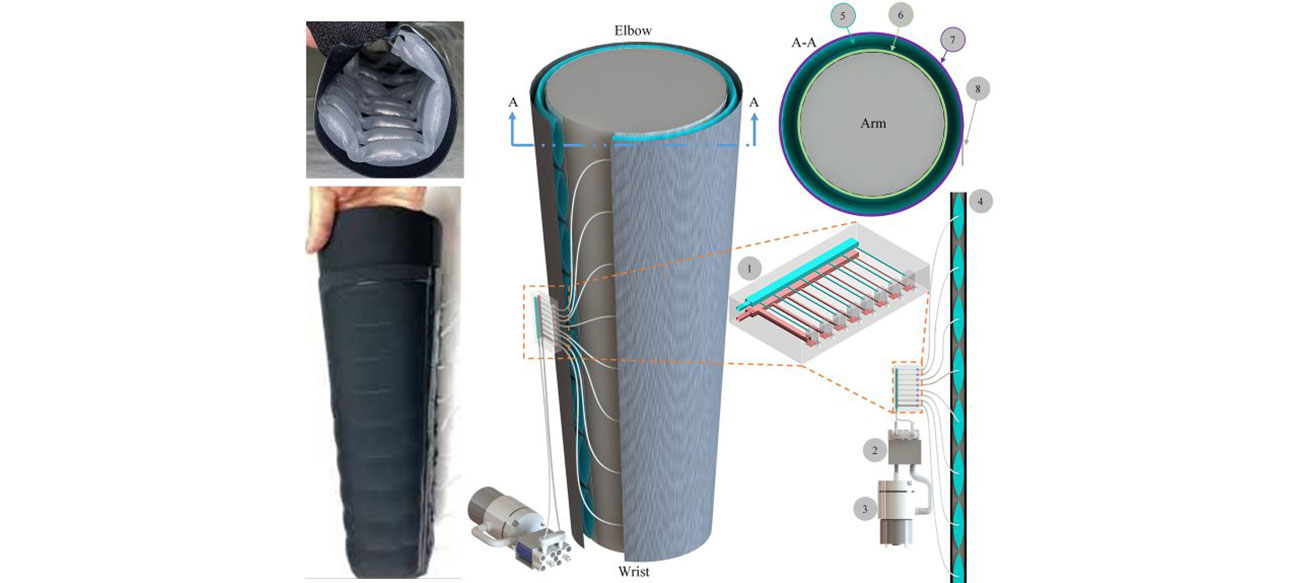Researchers at the University of Waterloo in Canada created a soft robotic sleeve to treat lymphedema. Lymphedema involves uid accumulation in tissues because of damage to the lymph system. This wearable sleeve combines a microuidic controller and soft robotic components that apply compression to the arm to reduce and control uid accumulation. The small components avoid the need for a stationary pump to inate the sleeve and allow for tetherless use during regular activities.
Lymphedema often strikes breast cancer patients, who frequently require surgical removal of lymph nodes in the
armpit. This can cause uid buildup in the arm, which can swell signicantly. At present, compression sleeves can be
used to treat the condition, but current iterations of such devices typically require a stationary pump to inate the sleeve. Such bulky and expensive equipment is impractical to use for extended periods as it requires a user to sit in one place during use.
“My denition of wearable is you can wear it and do whatever you want, and not be plugged into a wall,”said Carolyn Ren, one of the developers of the new system.“Bringing in the microuidics eld, we wanted to make
the system battery-powered but without compromising the performance.”
The system employs a microuidic device that contains a series of channels that offer different degrees of resistance, meaning that air travels through them either quicker or slower. This system creates a time delay that controls the sequential ination of different balloons within the sleeve so that the wearable sequentially pushes uid in the tissue up and out of the arm.
The device contains miniaturized valves and a 3.7-volt lithium-ion battery within a small control unit. The small components means that the system should cost just hundreds of dollars to manufacture, compared with thousands for conventional equipment.
Interestingly, the technology may also have other applications, including as a component in prosthetics for lower leg amputees. If a prosthetic wearer’s leg swells during activity, conventional prosthetic sockets cannot adjust, potentially leading to discomfort and friction. The researchers believe that soft robotics may assist in making the
socket more adaptable and comfortable to wear.
















